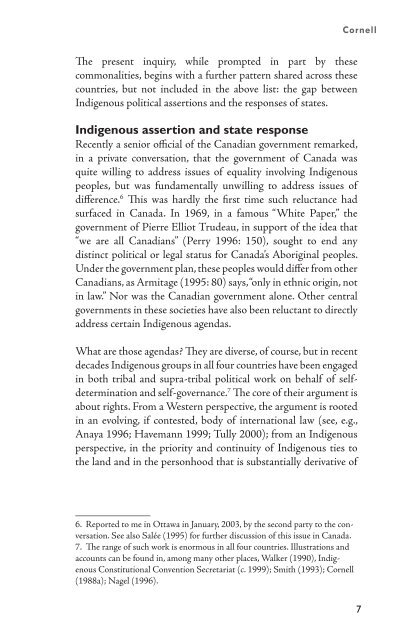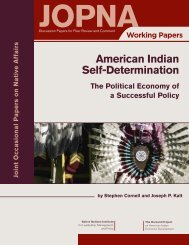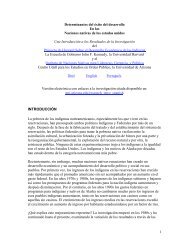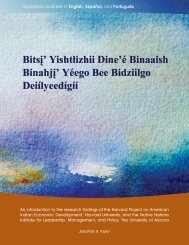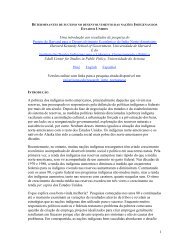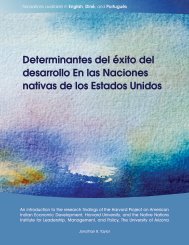Indigenous Peoples, Poverty, and Self-Determination in Australia ...
Indigenous Peoples, Poverty, and Self-Determination in Australia ...
Indigenous Peoples, Poverty, and Self-Determination in Australia ...
Create successful ePaper yourself
Turn your PDF publications into a flip-book with our unique Google optimized e-Paper software.
CornellThe present <strong>in</strong>quiry, while prompted <strong>in</strong> part by thesecommonalities, beg<strong>in</strong>s with a further pattern shared across thesecountries, but not <strong>in</strong>cluded <strong>in</strong> the above list: the gap between<strong>Indigenous</strong> political assertions <strong>and</strong> the responses of states.<strong>Indigenous</strong> assertion <strong>and</strong> state responseRecently a senior official of the Canadian government remarked,<strong>in</strong> a private conversation, that the government of Canada wasquite will<strong>in</strong>g to address issues of equality <strong>in</strong>volv<strong>in</strong>g <strong>Indigenous</strong>peoples, but was fundamentally unwill<strong>in</strong>g to address issues ofdifference. This was hardly the first time such reluctance hadsurfaced <strong>in</strong> Canada. In 1969, <strong>in</strong> a famous “White Paper,” thegovernment of Pierre Elliot Trudeau, <strong>in</strong> support of the idea that“we are all Canadians” (Perry 1996: 150), sought to end anydist<strong>in</strong>ct political or legal status for Canada’s Aborig<strong>in</strong>al peoples.Under the government plan, these peoples would differ from otherCanadians, as Armitage (1995: 80) says, “only <strong>in</strong> ethnic orig<strong>in</strong>, not<strong>in</strong> law.” Nor was the Canadian government alone. Other centralgovernments <strong>in</strong> these societies have also been reluctant to directlyaddress certa<strong>in</strong> <strong>Indigenous</strong> agendas.What are those agendas? They are diverse, of course, but <strong>in</strong> recentdecades <strong>Indigenous</strong> groups <strong>in</strong> all four countries have been engaged<strong>in</strong> both tribal <strong>and</strong> supra-tribal political work on behalf of selfdeterm<strong>in</strong>ation<strong>and</strong> self-governance. The core of their argument isabout rights. From a Western perspective, the argument is rooted<strong>in</strong> an evolv<strong>in</strong>g, if contested, body of <strong>in</strong>ternational law (see, e.g.,Anaya 1996; Havemann 1999; Tully 2000); from an <strong>Indigenous</strong>perspective, <strong>in</strong> the priority <strong>and</strong> cont<strong>in</strong>uity of <strong>Indigenous</strong> ties tothe l<strong>and</strong> <strong>and</strong> <strong>in</strong> the personhood that is substantially derivative of. Reported to me <strong>in</strong> Ottawa <strong>in</strong> January, 2003, by the second party to the conversation.See also Salée (1995) for further discussion of this issue <strong>in</strong> Canada.. The range of such work is enormous <strong>in</strong> all four countries. Illustrations <strong>and</strong>accounts can be found <strong>in</strong>, among many other places, Walker (1990), <strong>Indigenous</strong>Constitutional Convention Secretariat (c. 1999); Smith (1993); Cornell(1988a); Nagel (1996).


